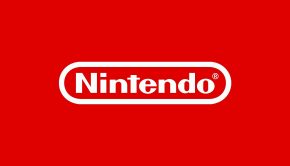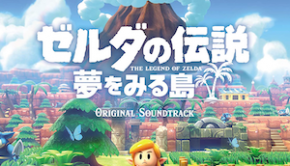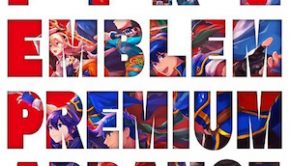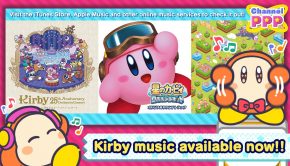The Legend of Zelda 25th Anniversary Symphony: London, October 2011
2011 has arguably been the best year in history for fans of The Legend of Zelda series. Nintendo promised that the 25th anniversary of Zelda would be special and it looks like they weren’t kidding either. Three games have come out this year — the remake of Ocarina of Time for 3DS, a free anniversary edition of Four Swords on DSiWare, and the upcoming Skyward Sword for the Wii, which early reviews suggest is phenomenal. On top of all of that, Nintendo have partnered with PLAY! A Video Game Symphony producer Jason Michael Paul and his team to organise a series of concerts dedicated to arguably the greatest franchise in video game history. Four special concerts were held — two in Tokyo, one at the Pantages Theatre in Los Angeles, and one at the Hammersmith Apollo in London. The Apollo, a venue that usually hosts popular music gigs and comedy shows, is not the most typical London based venue for orchestral concerts. However, it still does the job and the acoustics sounded good for an arena.
I arrived when the doors had just opened to be greeted by the sight of a crowd of people streetpassing on their 3DSs and taking photos. There were a few cosplayers, but not to the extent you’d expect to find at Distant Worlds or Video Games Live. I have to admit people did come up with some incredibly creative costumes, as well as the expected Links, Zeldas, and Sheiks. Just to mention a few, two twin girls made brilliant outfits of the Twinrova witches and one guy had a Keaton mask. Then I went and joined the ticket holders cue, which was insane. It must have stretched on for over half a mile (it went round to the next street and back again), and for a moment I was worried we wouldn’t all get in in time for the first half, but it was fine. The venue were running late and, once doors opened, the cue moved pretty quickly. Once inside, shirts and posters were being sold (I got my hands on literally the last shirt available) and demos of Skyward Sword were available to try out. Needless to say this concert was big, and people had flown in from all over Europe to come and see it. People I talked to, sat near, and streetpassed were from, among other places, Germany, Spain, Italy, France, Holland and Finland.

At 7:30 PM, we then took our seats for the first half. The first things I noticed as I went in and saw the orchestra and the screen is that they didn’t cut any corners here. In other video game music concerts I’ve been to, the orchestra has been the size of a chamber orchestra. Here it was a full 100+ piece orchestra (specifically the Royal Philharmonic Concert Orchestra) and the screen was huge. Throughout the concert, the screen displayed various backdrops such as fairy dust, fire, water, and a field, while game footage and live footage of the orchestra and people making speeches was displayed over the top of these backgrounds. They all looked great and added some nice footage to accompany the music. After the orchestra tuned and conductor Eimear Noone made her entrance, Zelda series mastermind Eiji Aonuma took to the stage. After trying and comically failing to speak English, he got his translator on stage to help him welcome everyone to the show, and asked people not to film the concert.
Now onto the music, the concert opened with the “Hyrule Castle” theme from A Link to the Past. This set the whole tone of the concert really well with its grand feel and majestic sound, and gave us a taster of what to expect from the rest of the concert. The orchestra nailed the dramatic, romantic style of the sweeping sections, while at the same time keeping within the light-hearted spirit of the Zelda series. The brass were particularly prominent here, and the trumpet fanfares really stood out. After this, Noone introduced us to the host of the concert, which was a big surprise. It was Zelda Williams, the daughter of actor and comedian Robin Williams (and yes, she is named after the princess we all know and love). Unfortunately at the start of the concert she was very nervous (she admitted it too), which wasn’t helped by some audience members (correcting her when she accidentally called Kakariko Village ‘Kakariko Valley’, and one guy thought it was appropriate to randomly shout out “You’re gorgeous!”, although this did get a laugh). However, she gradually got into the role and gained confidence, and I could tell she was a genuine fan of the series, just like her father. Speaking of which, it’s a shame that Robin Williams couldn’t make it. Being an avid gamer and Legend of Zelda fan, he could’ve added some great comedy into the show, but it’s understandable given that he’s only just gotten married at the time of writing.
After Zelda’s first speech, the next item on the agenda was “Zelda’s Lullaby”. The concert programme talks about how this piece — originally written for A Link to the Past — created the five note scale that would then be used for the ocarina melodies in Ocarina of Time and Majora’s Mask, Re-Fa-La-Ti-Re or D-F-A-B-D. The arrangement focused on a solo violin, which started with the melody and then played a counter-melody while the woodwinds carried the tune. This was a really sweet arrangement which captured the innocent spirit of the two main characters. Eimear was great as the conductor, and is obviously very experienced in the field (her credits range from World of Warcraft to Britain’s Got Talent).
Then we were treated to the first of two symphonic movements featured in this concert. The team have planned and written a four movement Zelda symphony, which will be performed in its entirety at next year’s Zelda Symphony world tour, and people who attended these special concerts were treated to the first two movements of this symphony. The first movement is focused on The Wind Waker. While doing the music for this game, the composer team have remarked that the scenery and graphics of the game made them think of Irish music and culture. This fitted perfectly for a symphonic movement as Irish music is often about fitting several short melodies together, and this was apparent in the arrangement, which sounded like a complete work as oppose to a medley. Several of the most prominent musical themes from the game made an appearance here, taking us through the complete story of the game right up to the credits, with themes such as “Outset Island”, “The Great Sea” and “Ganondorf Battle” standing out. The orchestra nailed the general light-hearted feel of the game, and “The Great Sea” and “Ganondorf Battle” were especially intense. By now, I realised that real care was taken over the orchestration by Chad Seiter, a disciple of Michael Giacchino. All the pieces in the programme have been arranged for orchestra exactly how a big fan of the series would want to hear them, while not sacrificing creativity, which is a perfect balance.

The next item on the programme was interesting — a series of ocarina melodies from Ocarina of Timeand Majora’s Mask. The idea was that, one by one, each section of the orchestra played different pieces and gave an example of what that instrument can do, with a tiny bit of help from other instruments where necessary. The sections ranged from the flutes (“Sun’s Song”), the clarinets (“Minuet of Forest”,), all woodwinds (“Prelude of Light”), French horns (“Bolero of Fire”), trombones (“New Wave Bossa Nova”), all brass (“Sonata of Awakening”), percussion (“Song of Healing”), harp (“Serenade of Water”, choir (“Song of Time”), violins (“Epona’s theme”), cellos (“Oath to Order”), all strings (“Song of Storms”), and finally the whole orchestra (“Saria’s Song”). All of this worked brilliantly, and the orchestra got the feel of “Saria’s Song” spot on, which almost became circus like thanks to its heavy bass. I could see this kind of thing working really well in an educational context, much like Prokofiev’sPeter and the Wolf. Maybe not with the Nintendo 64 games, as those games are special to my generation, but however it’s done it would be a brilliant introduction to the orchestra for young children.
After this, we heard a medley of boss battle themes. It started with the intense mid-boss and second boss battle themes from Ocarina of Time, moved on to more refined and quirky boss themes such as “Molgera” from The Wind Waker and “Boss Battle 2” from Spirit Tracks, and then returned to an intense feel with “Boss Battle 2” from Twilight Princess. The Ocarina of Time themes were very heart pounding and kept driving forward thanks to the snare drum. I think we could’ve heard the strings a bit more but the performance was still great, and the footage of some of the memorable boss fights from the games heightened the intensity of the performance. The next item was, by complete contrast, “Kakariko Village”. This was played with a real warmth and a broad romantic orchestral sound, which suited the piece really well.
The first half was closed off with a special “25th Anniversary Medley”, named as such because of the significance of the pieces featured in the medley. “The Triforce Room” from A Link to the Past opened the medley, which was followed by the “Steam Train Field” theme from Spirit Tracks, and I’m so glad they nailed this piece, as it’s one of my favorite pieces from recent memory. This was followed by “Dragon Roost Island”, one of The Wind Waker‘s signature themes. The woodwinds really captured the airy sound normally associated with pan pipes and flutes of this nature. The piece then closed off with two variations on familiar themes — first was the “Light World Theme” from A Link to the Past, a variation on the Zelda main theme, and finally “Princess Zelda’s Theme” from Ocarina of Time, a variation on “Zelda’s Lullaby”. Both were performed brilliantly and made a great closing segment for the first half. During the interval, I bumped into an old school friend, which was nice. I also said ‘hello’ to some of the staff who work at Official Nintendo Magazine UK, of which I am a reader.
The second half began with the complete musical representation of Ganondorf from Ocarina of Time. The first note almost made me jump out of my seat — I did not expect the pipe organ at the Hammersmith Apollo to sound so good, but it did. This made for a truly epic and intense performance of the previously exposed “Ganondorf’s Theme”. Unfortunately the bass notes were far too loud — so much so that it almost drowned out everything else (I could feel my seat rumbling on the particularly low notes). This wasn’t an issue for the two final boss battle themes, which did a great job of keeping everyone on the edge of their seats, thanks to some great work in the percussion section.

Next up was a medley of dungeon themes, starting off with the original dungeon theme from The Legend of Zelda, which was very impressive, they managed to arrange an 8-bit original in such a way that it would sound really intense, and it worked really well. All of the other dungeon themes sounded great too, there are too many to mention here. The arrangers and orchestrators decided to throw in a few jingles such as the item get jingle for a laugh as well, and it worked. This was followed by “Gerudo Valley”. With this arrangement the team were aiming for a more magnificent and bold feel, keeping with the general spirit of the concert, compared to the Spanish feel of the original, and they did a good job with this. Personally I would have said that this piece should be one of the light-hearted arrangements in the concert, but what was performed worked well.
Next up was the classic “Hyrule Field” from Ocarina of Time, which was fantastic. This arrangement stayed true to and was similar to the orchestral medley heard at the end of the 3DS remake of the game, and it went through all of the states of interactivity found in game. From the glorious feel of the theme without any danger to the more intense bits of the theme when approaching more dangerous territory. This was followed by a beautiful rendition of “Great Fairy’s Fountain”, which started with a harp duet and was eventually joined by the woodwinds, strings and finally the choir. Up until this point, I’d actually forgotten the choir were there — they felt a bit underused throughout the concert.
This was rectified in the next piece, the second symphonic movement of the Zelda symphony, this one focusing on Twilight Princess. It was certainly nice to hear a full orchestra playing these pieces, something that was sorely missing from the game. Here the choir got a proper showcase too, which was great as they are a really good choir. This was apparent right from the beginning with the “Title Screen”, and the range of styles they displayed was fantastic too, from the ominous feel of “Lamentation of the Spirits” to the dark feel of “The Sages’ Theme” to the epic and majestic feel of “Hyrule Field” when appropriate. “Hyrule Field” was fantastic, going through several of the states of interactivity within the game and conveying an appropriate feeling of majesty. “Ganondorf’s Battle” was epic, and brought back memories of what many people say is one of the best moments in Zelda history. The movement was closed off with the credits music, which could have been a piece in itself. All in all a fantastic performance.
And finally, the concert finished (or so we all thought) with a theme and variations type medley of the main theme we all know and love. This has to be the best orchestration that I have ever heard of the main theme, and the jingles were back too. It was in the original key of B flat major and it sounded appropriately triumphant. After the piece finished, as I expected, the entire audience gave a standing ovation.
Then we were treated to two big surprises. The conductor Eimear Noone out of nowhere said “Ladies and gentlemen, it is my honour to introduce Koji Kondo”. This resulted in a sudden roar of cheers and applause, followed by Kondo playing “Grandma’s Theme”, one of his few new compositions on the The Wind Wakerm on the piano. This was a great performance and a really nice surprise. He then made a speech about how much he’s loved working on the series and how much he’s enjoyed these concerts. After this, Eiji Aonuma returned to the stage to talk about Skyward Sword and the importance of the music in video games, especially for memory and nostalgia purposes, and that’s why the game will be including a CD of the arrangements performed at these concerts. The orchestra then performed the main theme from Skyward Sword to close the concert. This was a great way of ending the concert and great preparation for the release of the game.

I had a brilliant time at the concert, and can honestly say — from talking to people afterwards, seeing and reading other people’s reactions and thoughts — that it was a triumph. The orchestrations and arrangements are fantastic and the performance was heartfelt and spectacular to listen to and watch. If Jason Michael Paul and his team can keep this up, then they will have put themselves back in the limelight after their troubles with PLAY! A Video Game Symphony. The CD of these arrangements should be brilliant and is even more reason to get Skyward Sword this Christmas. I am so happy that Nintendo are, after some serious reluctance, finally embracing the orchestra not only in recording soundtracks, but as a means of putting on concerts too, and their track record so far with this (Super Mario Galaxy, Super Mario Galaxy 2, Skyward Sword, this concert) has been top notch. The world tour will easily be an event worth looking out for next year, and if this concert is anything to go by, it’ll be a tour that should rival Distant Worlds: Music from Final Fantasy. So if the tour comes near where you live, do not miss out on the opportunity to see this fantastic concert next year.
Posted on October 25, 2011 by Joe Hammond. Last modified on March 1, 2014.














